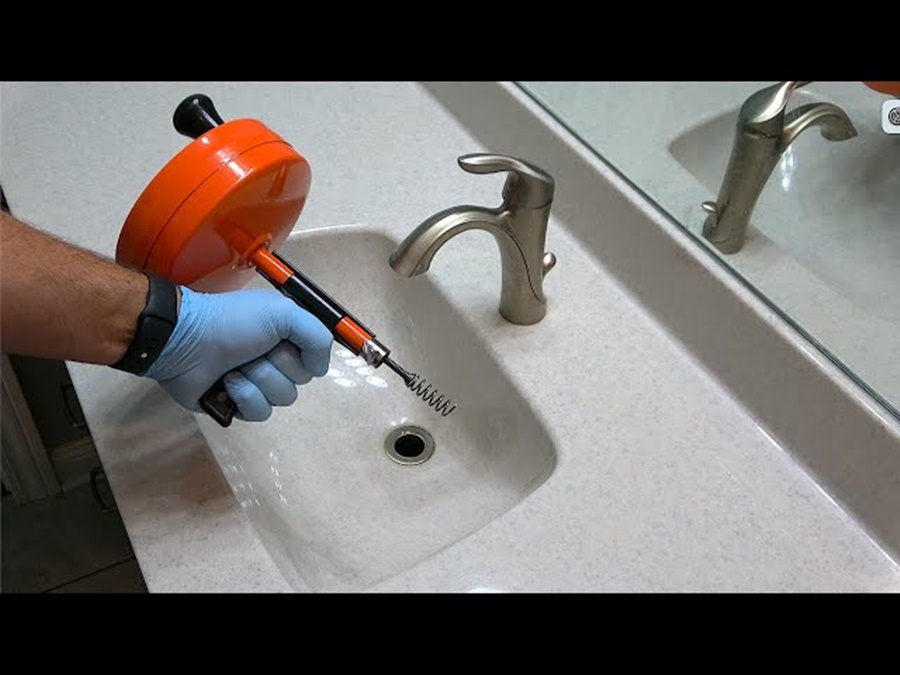A clogged bathroom sink is a common but frustrating household issue. Whether it's caused by hair, soap scum, toothpaste buildup, or other debris, a slow or completely blocked drain can disrupt your daily routine. In this comprehensive guide, we walk you through proven methods to unclog your bathroom sink, from simple DIY techniques to advanced solutions.
Understanding the Causes of a Clogged Bathroom Sink
Before tackling the problem, it's crucial to understand what causes bathroom sink clogs. The most common culprits include:
Hair: Hair strands easily accumulate in the drain and bind with sticky substances like soap or conditioner.
Soap scum: Over time, soap residue hardens and sticks to the inside of pipes.
Toothpaste and cosmetics: These can create a gooey paste that narrows the drainpipe.
Foreign objects: Jewelry, cotton swabs, or other small items can accidentally fall into the sink.
Tools and Supplies You May Need
To effectively unclog your sink, gather the following supplies:
Plunger
Drain snake (or plumber’s auger)
Rubber gloves
Bucket
Adjustable wrench
White vinegar
Baking soda
Boiling water
Old toothbrush or wire brush
Method 1: Use Boiling Water (Best for Mild Clogs)
This is the simplest and fastest method to try first.
Steps:
1. Boil a full kettle or large pot of water.
2. Carefully pour the hot water directly into the drain in stages.
3. Wait a few minutes and test the drain flow by running water.
Why it works: Boiling water helps melt grease and soap buildup, flushing it through the pipe.
Method 2: Baking Soda and Vinegar (Eco-Friendly Solution)
This natural drain cleaner works well for soft clogs and is safe for your plumbing.
Steps:
1. Remove any standing water in the sink.
2. Pour 1/2 cup of baking soda into the drain.
3. Follow with 1/2 cup of white vinegar.
4. Cover the drain with a plug or cloth to contain the reaction.
5. Let it sit for 30–60 minutes.
6. Flush with boiling water to clear the loosened debris.
Bonus tip: Repeat this monthly as a preventive measure.
Method 3: Use a Plunger (Best for Solid Blockages)
A standard cup plunger works well for most bathroom sinks.
Steps:
1. Seal the overflow hole using a damp cloth.
2. Fill the sink with enough water to cover the plunger head.
3. Place the plunger over the drain and pump vigorously 10–15 times.
4. Remove the plunger and check if the water drains properly.
Important: Ensure the plunger forms a tight seal for maximum suction.
Method 4: Remove and Clean the Pop-Up Stopper
Many clogs form right beneath the pop-up drain stopper, which traps hair and debris.
Steps:
1. Unscrew and remove the stopper from the drain.
2. Use an old toothbrush or wire brush to clean it thoroughly.
3. Remove any visible debris from the drain opening.
4. Rinse and reinsert the stopper.
Pro tip: You may need to go under the sink to detach the stopper rod for full removal.
Method 5: Use a Drain Snake or Zip-It Tool (Best for Deep Clogs)
For more stubborn clogs, a drain snake is your best ally.
Steps:
1. Insert the snake or plastic zip-it tool into the drain slowly.
2. Push it down until you feel resistance.
3. Twist and pull it back to extract hair and debris.
4. Repeat the process until the snake comes back clean.
5. Rinse the drain with hot water.
Result: Immediate restoration of drain flow in most cases.
Method 6: Clean the P-Trap (Advanced Manual Option)
If none of the above methods work, it's time to check the P-trap, the curved section of the pipe beneath your sink.
Steps:
1. Place a bucket under the P-trap to catch water.
2. Use an adjustable wrench to loosen the slip nuts on both ends.
3. Carefully remove the trap and inspect it for blockages.
4. Clean it with warm water and a wire brush.
5. Reattach the trap and run water to test for leaks.
Warning: Ensure all seals are tightened to prevent drips.
Preventive Measures to Avoid Future Clogs
To keep your bathroom sink running smoothly, follow these tips:
Install a hair catcher or drain screen to trap debris.
Avoid pouring grease, oil, or thick products down the sink.
Run hot water for 30 seconds after each use to keep pipes clear.
Clean the stopper monthly to prevent buildup.
Use the baking soda and vinegar method regularly as maintenance.
When to Call a Professional Plumber
If the clog persists after trying all the above methods, it may be a sign of:
Deeper blockages in your plumbing system
Damaged or corroded pipes
Recurring issues caused by poor pipe design
At this point, it's best to consult a licensed plumber who can use professional equipment like a motorized auger or pipe inspection camera to diagnose and resolve the issue.
Conclusion
A clogged bathroom sink doesn’t have to be a major inconvenience. With the right tools, methods, and preventive practices, you can restore proper drainage and maintain a healthy plumbing system without expensive repairs. Whether it's a simple hot water flush or a deep-cleaning P-trap procedure, we hope this guide has provided all the detailed solutions you need.

